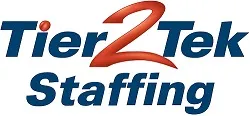Filling 100 roles without losing sleep is a challenge every high-growth company faces at some point. Whether it’s due to expansion, funding rounds, or major restructuring, scaling hiring efforts without burning out your team or compromising on quality requires a strategy-driven approach.
Recruitment at scale isn’t just about speed—it’s about consistency, quality, and sustainability. If you’re staring at a list of open positions and wondering how you’ll ever get them filled, this guide will walk you through practical strategies to get the job done efficiently and effectively.
Create a Scalable Hiring Process
Build a Repeatable Workflow
To fill 100 roles without chaos, your recruitment process must be standardized.
- Document each stage of the hiring funnel
- Define clear roles for HR, hiring managers, and interviewers
- Use automation wherever possible
- Ensure a consistent candidate experience across all roles
A repeatable system ensures that hiring volume doesn’t result in hiring confusion.
Centralize Job Requirements
Avoid redundant back-and-forth with hiring managers by developing clear, centralized job descriptions.
- Create templates for frequently hired roles
- Standardize skill, experience, and education requirements
- Ensure all stakeholders agree on “must-haves” vs. “nice-to-haves”
This alignment accelerates the screening process and minimizes candidate mismatches.
Use Technology to Accelerate Hiring
Invest in the Right ATS
An applicant tracking system (ATS) is critical when you’re hiring at scale.
Look for an ATS that:
- Automates candidate communication
- Supports bulk actions (e.g., tagging, moving candidates)
- Integrates with sourcing platforms like LinkedIn or job boards
- Offers reporting dashboards to track KPIs
A robust ATS can save hundreds of hours over the course of a high-volume recruitment campaign.
Leverage AI and Automation
Let smart tools handle repetitive tasks.
- Use AI to screen resumes based on job criteria
- Set up automated email sequences for follow-ups
- Use chatbots for initial engagement and FAQs
This allows your team to focus on high-impact, human-driven stages like interviews and offer negotiations.
Expand Your Talent Sourcing Channels

Build a Talent Pipeline Before You Need It
Filling 100 positions doesn’t have to start from scratch. Build and nurture a talent pipeline even before roles are open.
- Host webinars or virtual hiring events
- Engage passive candidates on LinkedIn
- Build an email list of interested professionals
When you’re ready to hire, you’ll already have warm leads to reach out to.
Diversify Your Sourcing Strategy
Don’t rely solely on job boards.
- Tap into employee referrals (they often close faster)
- Partner with niche industry communities
- Work with staffing agencies for high-volume roles
- Recruit at universities and bootcamps for junior roles
Each channel brings a unique talent pool, which is key when hiring in volume.
Structure Your Hiring Team for Scale
Create a Hiring Pod System
Divide your hiring team into pods that specialize in certain departments or levels.
Each pod could include:
- A recruiter
- A sourcing specialist
- A coordinator
- A hiring manager liaison
This structure keeps roles from slipping through the cracks and builds domain expertise.
Train Hiring Managers to Make Faster Decisions
Equip hiring managers to confidently assess candidates without unnecessary delays.
Provide:
- Interview training and scorecards
- Clear expectations on turnaround time
- Pre-aligned criteria on what makes a hire-ready candidate
Fast, informed decisions are critical when you’re hiring at scale.
Prioritize Candidate Experience

Don’t Sacrifice Experience for Speed
Even when hiring 100 people, you can’t afford to treat candidates like numbers.
Maintain a positive experience by:
- Communicating timelines clearly
- Giving personalized feedback when possible
- Keeping interview rounds lean but informative
A strong candidate experience strengthens your employer brand and improves offer acceptance rates.
Personalize Offers and Onboarding
Mass hiring doesn’t mean cookie-cutter onboarding.
- Tailor offers to candidates’ priorities (compensation, flexibility, growth)
- Group new hires into onboarding cohorts for shared learning
- Assign onboarding buddies or mentors
Engagement from Day 1 sets the tone for retention and productivity.
Monitor and Optimize Continuously
Track Key Metrics
Keep your hiring machine tuned by measuring what matters.
Track metrics like:
- Time to fill
- Cost per hire
- Source of hire
- Candidate drop-off rate
- Offer acceptance rate
These insights highlight bottlenecks and help optimize your process in real-time.
Conduct Retrospectives
Once you’ve filled 20, 50, or 100 roles, pause and reflect.
Ask:
- What slowed us down?
- Where did quality drop?
- Which strategies brought the best candidates?
Refining your process along the way makes future hiring waves smoother and smarter.
Filling 100 roles without losing sleep isn’t just about more recruiters or bigger budgets—it’s about building a smart, scalable hiring ecosystem. With the right structure, tools, and mindset, your team can grow fast without burnout, bottlenecks, or broken candidate experiences. By staying strategic and continually optimizing your process, high-volume hiring becomes not just manageable—but repeatable.
Content reviewed and published by Tier2Tek Staffing Editorial Team .

